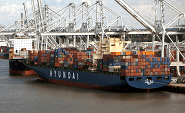Trade Cases

Trudeau, Trump agree to push tariffs until March
Written by Laura Miller
February 3, 2025
Canada fights back, a little
As this article was about to be posted, Canada had not backed down to US President Trump’s 25% tariffs coming for Canadian goods at the stroke of midnight.
In fact, the Government of Canada had pushed back, saying it would implement 25% tariffs on $155 billion worth of US products starting at the same time.
“Canada will not stand by as the United States imposes unjustified and unreasonable tariffs on Canadian goods,” the Department of Finance Canada said in a statement on Sunday, Feb. 2.
But just before 5 p.m. ET on Monday, Trump and Canadian Prime Minister Justin Trudeau announced they had talked and both sides would be pausing the tariffs for a 30-day period, so we had to slightly redo this post.
Trudeau said Canada is implementing a $1.3 billion border plan, which includes sending ~10,000 frontline personnel “to stop the flow of fentanyl.”
Pleased with this initial outcome, Trump said tariffs would be “paused for a 30 day period to see whether or not a final Economic deal with Canada can be structured.”
Canada’s initial list of US products to hit with tariffs is long and can be found here. The steel-intensive appliances on the list could be of interest to the SMU community: refrigerators, washing machines, dishwashers, stoves, and ranges.
Canada said steel, aluminum, automobiles, and aerospace products were among the US products that faced tariffs on a second list. Stay tuned for next month’s tariff deadline crunch.
Canadian steel industry displeased
The Canadian Steel Producers Association (CSPA) initially reacted with deep disappointment to Trump’s 25% tariffs on Canadian products. President Catherine Cobden highlighted the “significant disruption and economic hardship” the tariffs would cause for the highly integrated North American steel industry.
Cobden said it’s concerning that Canada’s efforts to safeguard the North American steel market are not being recognized. She pointed out that Canada has demonstrated a willingness to work with the US to tackle unfair trade, from enacting melted and poured requirements to aligning tariffs on Chinese products.
Before late Monday’s deal, CSPA welcomed the Canadian government’s “decisive action through retaliation” and supportive approach to helping the country’s industry.
USW chimes in
The United Steelworkers spoke up on behalf of its many members on both sides of the US/Canada border.
“The USW has long called for systemic reform of our broken trade system, but lashing out at key allies like Canada is not the way forward,” USW International President David McCall said in a statement on Feb. 1.
“The key to eliminating unfair competition, confronting global overcapacity in crucial sectors, and stemming the flow of unfairly traded products making their way into North America is targeted tariffs on countries that violate our trade laws and greater coordination with our trusted allies – not sweeping actions that undermine crucial relationships,” he noted.
Tariffs threaten to destabilize industries on both sides of the border, he said. He called on the president “to reverse course on Canadian tariffs so that we can focus on trade solutions that will serve working families for the long-term.”

Laura Miller
Read more from Laura MillerLatest in Trade Cases

Trump still against selling USS to Japanese firm: Report
Despite ordering a new review of Nippon Steel’s bid for U.S. Steel, President Trump said he is still against selling USS to a Japanese company, according to media reports.

CRU: ‘Liberation Day’ brings sweeping US tariffs
For trading partners, the tariffs will reduce demand for exports and depress growth. Over the coming days, trade partners will almost certainly announce retaliation, which will hit US exports.

Leibowitz: The blowback from Trump’s ‘Liberation Day’ tariffs has only just begun
Tariffs are taxes that the government collects. Funds are disbursed by acts of Congress. If domestic companies, including manufacturers, are to benefit from “protective” tariffs, they must raise their prices as well. Maybe not by the entire amount of the tariffs, but by some. Inflation will come.

Supply chains, end-users brace for impact from tariffs
Supply chains are working through what the tariffs mean for them

Commerce releases prelim anti-dumping duties in sweeping trade case targeting CORE imports
The US Commerce Department on Friday released preliminary anti-dumping margins in a trade case targeted imports of coated flat-rolled steel from 10 countries. Certain countries and mills were hammered while others were largely spared. Brazilian steelmaker CSN, for example, received a preliminary rate of 137.76%. Some Turkish mills – including Boreclik and ArcelorMittal Celik Ticaret – received no dumping margin at all.
